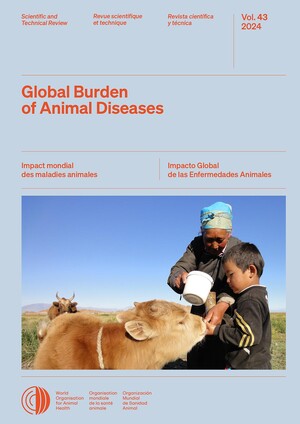
Reducing soil erosion in smallholder farming systems in east Africa through the introduction of different crop types
Abstract
On low-input smallholder farms of Kenyan upland landscapes, erosion of nutrient-rich topsoil strongly affects crop yields. Where maize (Zea mays) is intercropped on erosion-prone slopes, intercropping can potentially reduce soil erosion. The objective of this research was to quantify the contribution of crops and crop mixtures of different growth habits to erosion control and their influence on above-ground biomass and earthworm abundance as indicators of soil function in smallholder farming systems under a bimodal rainfall pattern in Western Kenya. The experiment involved five treatments, namely maize (Z. mays)/common bean (Phaseolus vulgaris) intercrop (maize intercrop), maize/common bean intercrop plus Calliandra (Calliandra calothyrsus) hedgerows and Calliandra mulch (Calliandra), sole Lablab (Lablab purpureus), sole Mucuna (Mucuna pruriens) and groundnut (Arachis hypogaea) intercropped with maize (during the short rains). The experiment was conducted over three consecutive cropping seasons and the cropping system had significant effects on soil loss, runoff, water infiltration, earthworm abundance and above-ground biomass and crop grain yield. The Calliandra treatment had the lowest runoff (11.6–17.2 mm ha−1) and soil erosion (31–446 kg ha−1 per season) in all the seasons, followed by the Mucuna treatment. Lablab was affected by disease and showed the highest soil erosion in the last two seasons. Infiltration was highest in Calliandra treatment, and earthworm abundance was higher under Mucuna and Calliandra treatments (229 and 165 earthworms per square metre, respectively) than under other crops. Our results suggest that including sole crops of herbaceous species such as Mucuna, or tree hedgerows with mixtures of maize and grain legumes has the potential to reduce runoff and soil erosion in smallholder farming. Additionally, these species provide a suitable habitat for earthworms which stabilise soil structure and macropores and thus potentially increase infiltration, further reducing soil erosion.
Citation
Muoni, T., Koomson, E., Öborn, I., Marohn, C., Watson, C.A., Bergkvist, G., Barnes, A., Cadisch, G. and Duncan, A.J. 2019. Reducing soil erosion in smallholder farming systems in east Africa through the introduction of different crop types. Experimental Agriculture










